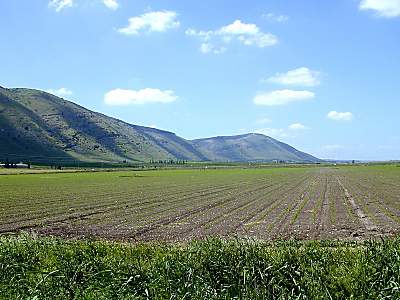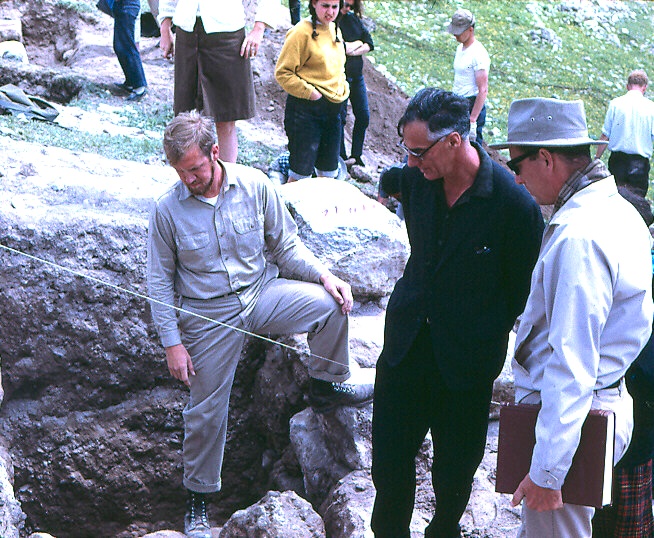The Significance of the Physical Setting
G.E. Wright observed that of all of the scriptures of the major world religions, the Bible is the only one requiring a grasp of history and geography. The quantity of historical and geographical references made in both its prose and its poetry impresses the reader of the need to be aware of these aspects of the text. Although the bulk of the biblical text is centered along the southern Levant, its narratives and speeches encompass territories much farther to the E and N and W.

Looking north from S. Sinai.
The reader is impressed that the writers of the Hebrew Bible demonstrated a keen awareness of their surroundings. Descriptions of the terrain, the flora and fauna are remarkably detailed.

"Then they came to Elim where there were twelve springs of water and seventy date palms." Ex. 15:27.
The ways that the topography influences events is equally remarkable. As one follows the narrative through successive periods of history interaction between peoples occur in many of the same places because of topography.

The limestone Judean mountains.
That is where the water resources are located; this is where the terrain allows for battle; that is where farming is best or where livestock can be supported; this is a regional route and there is an international route.

Classic battlefield - looking W. down the Jezreel Valley. Gideon thinned out his troops at the Spring of Harod at the foot of Mt. Gilboa to the left of the picture..
These topographical features dictated where battles would be fought, where travel and the attendant social and commercial intercourse would be routed, and consequently, where fortifications would need to be established.

Paul Ferris, Yohanan Aharoni & Bill Dever discuss whether the gate discovered at Tel Gezer was Solomonic.

Prisoners from Astaru (0n Golan heights E of Galilee) captured by Tiglath-Pilesar III (Pul in Hebrew)

Babylon's Ishtar gate, reconstructed in the Pergamon Museum, Berlin)
From beginning to end, although the characters and plot may change, the stage on which the drama is played out is basically the same.

The "stage" on which the drama of redemption played out


